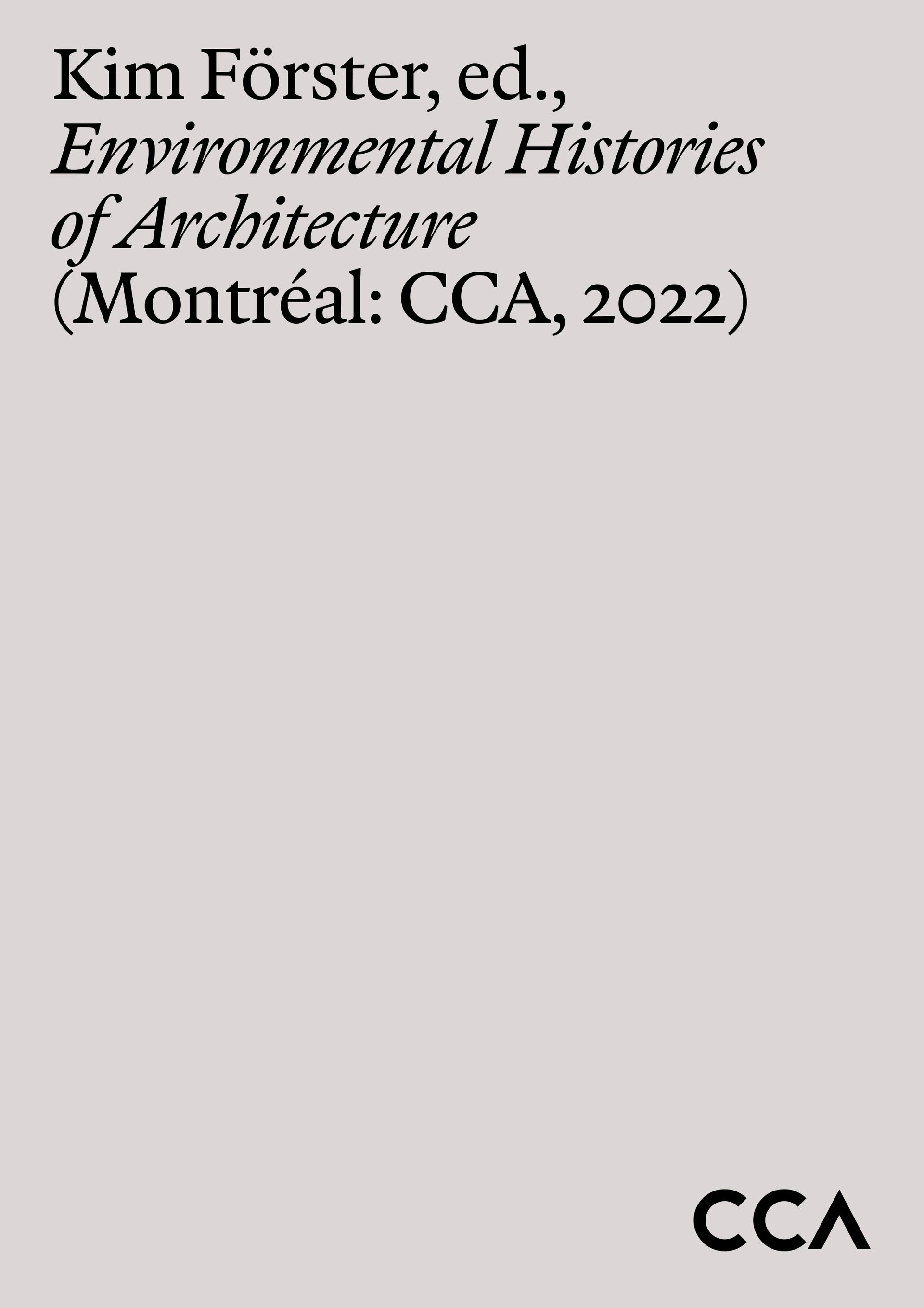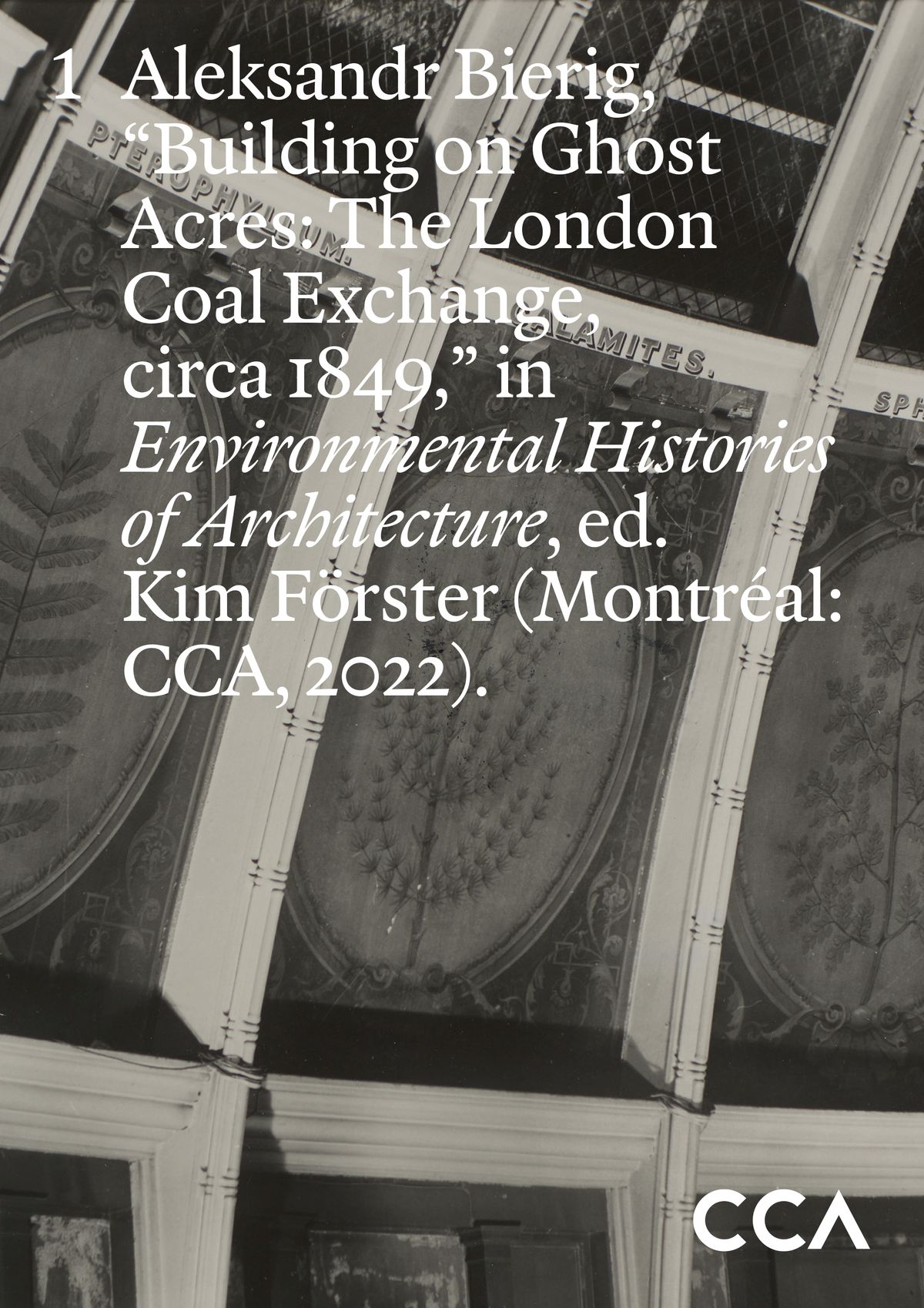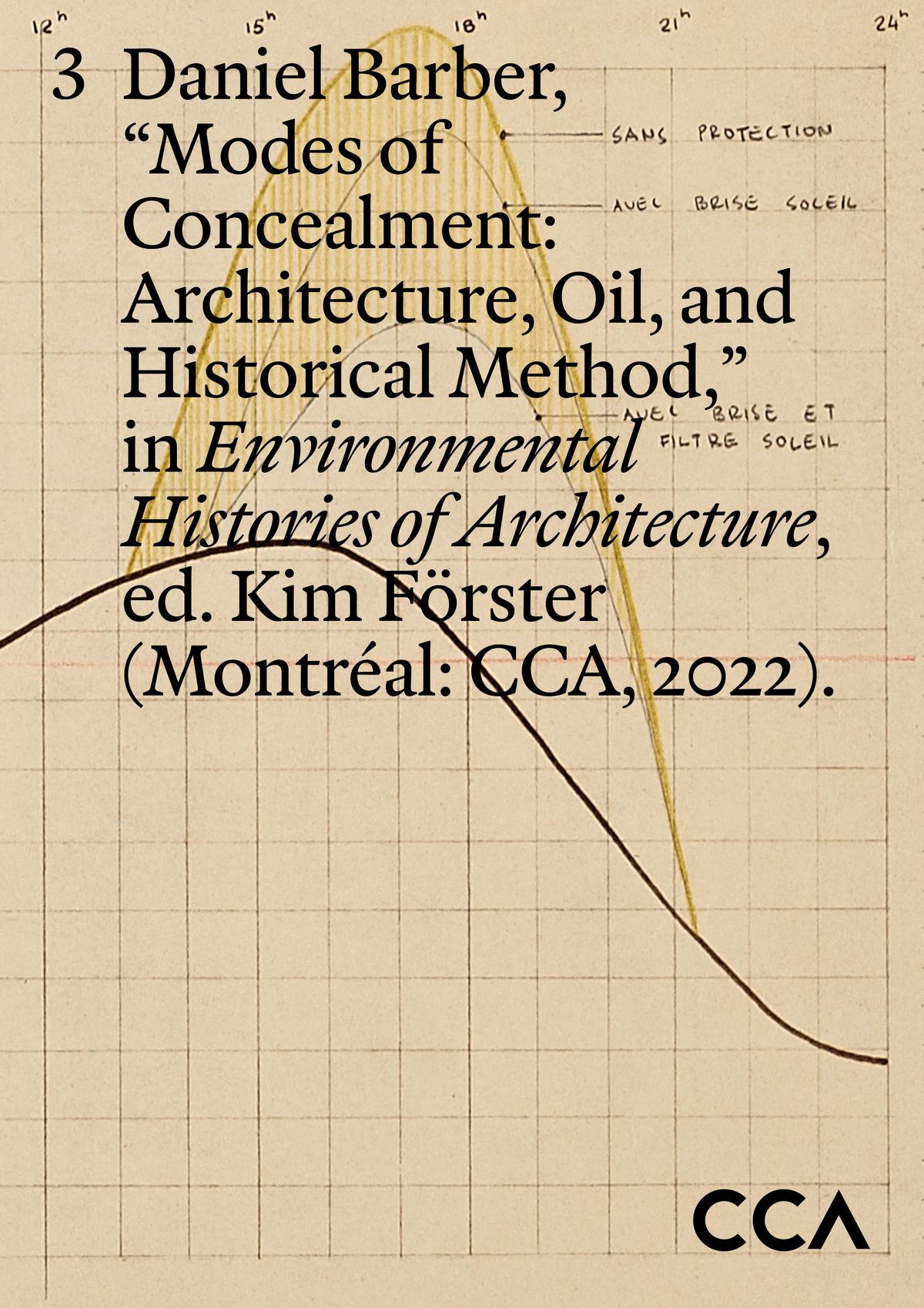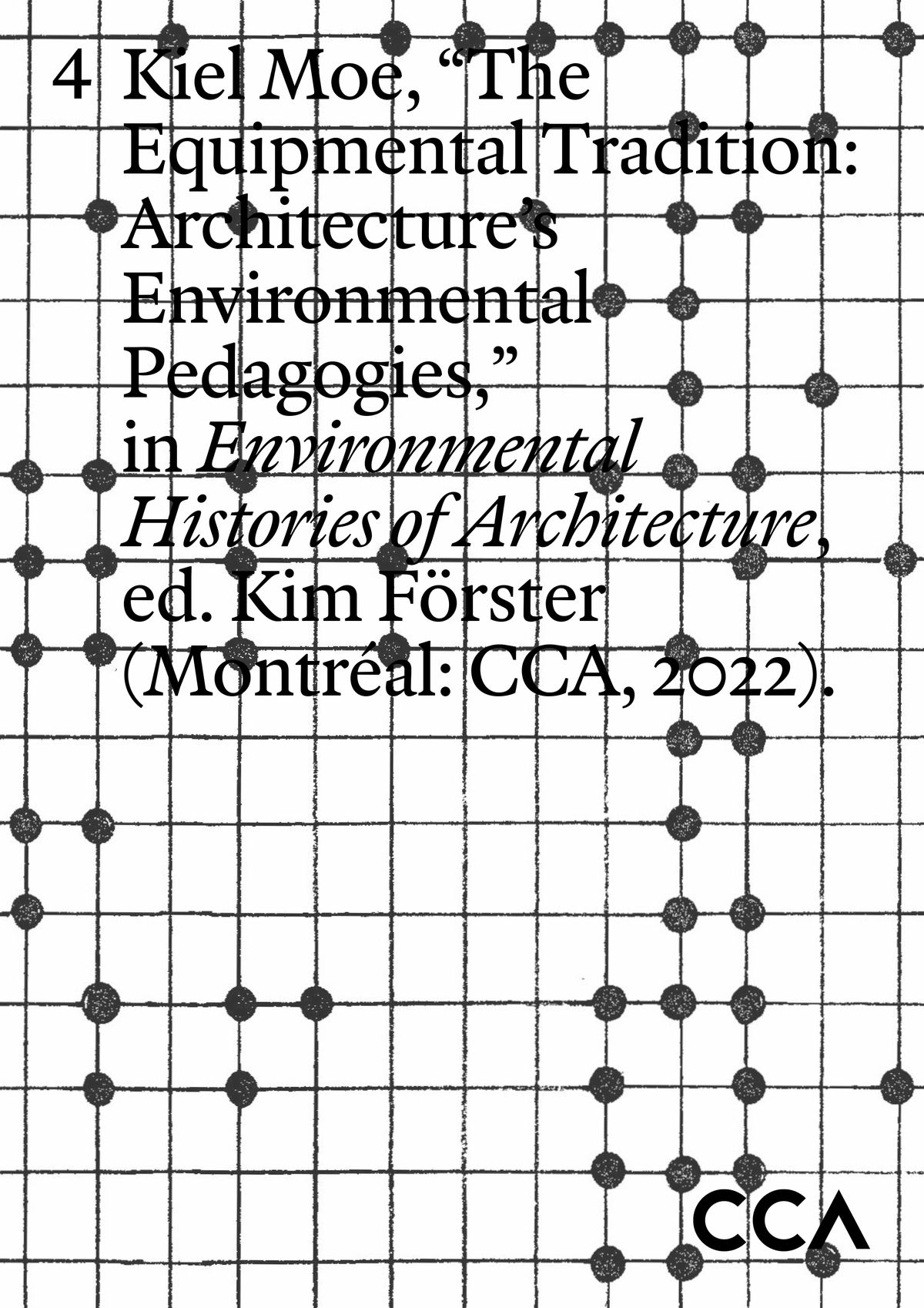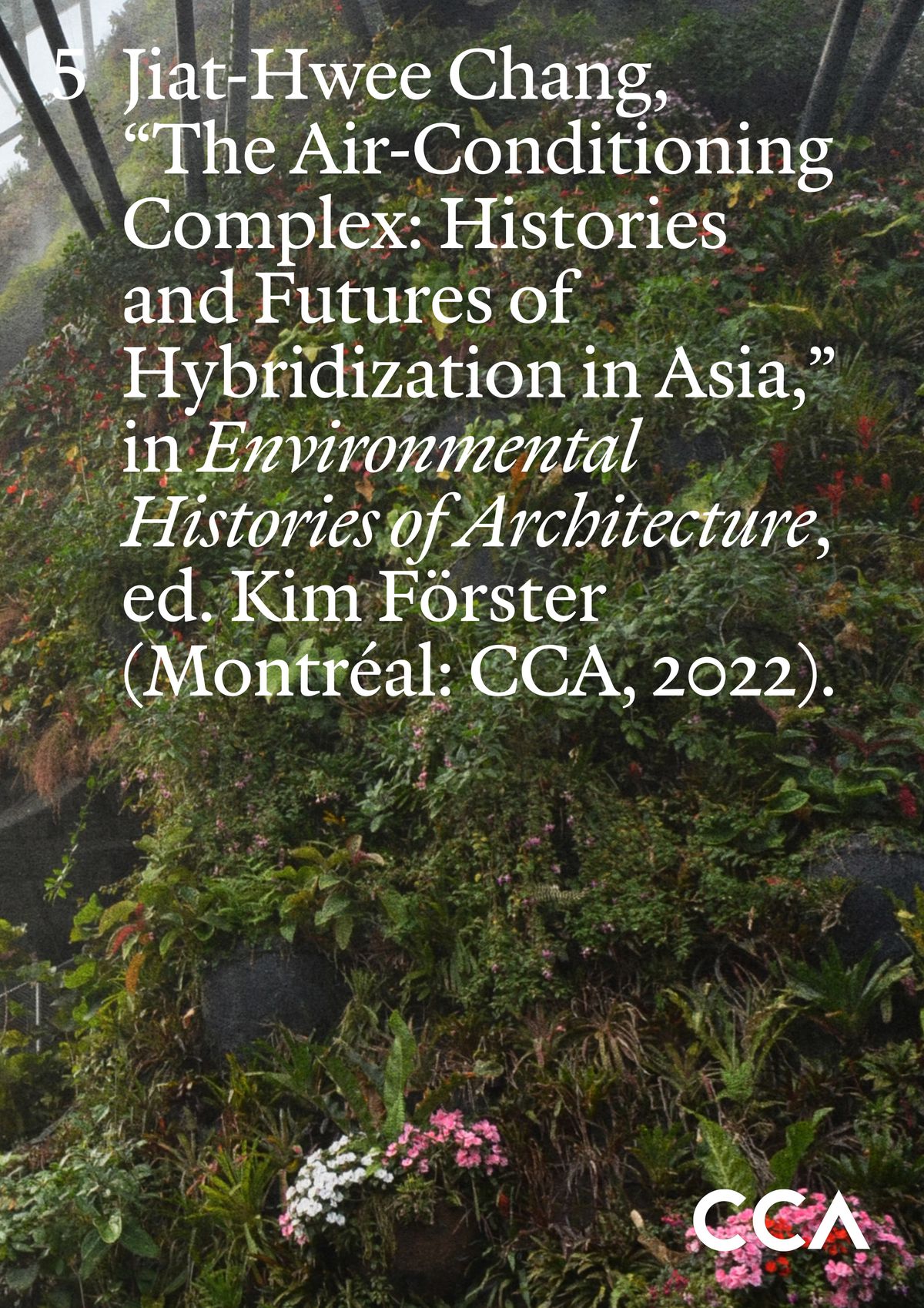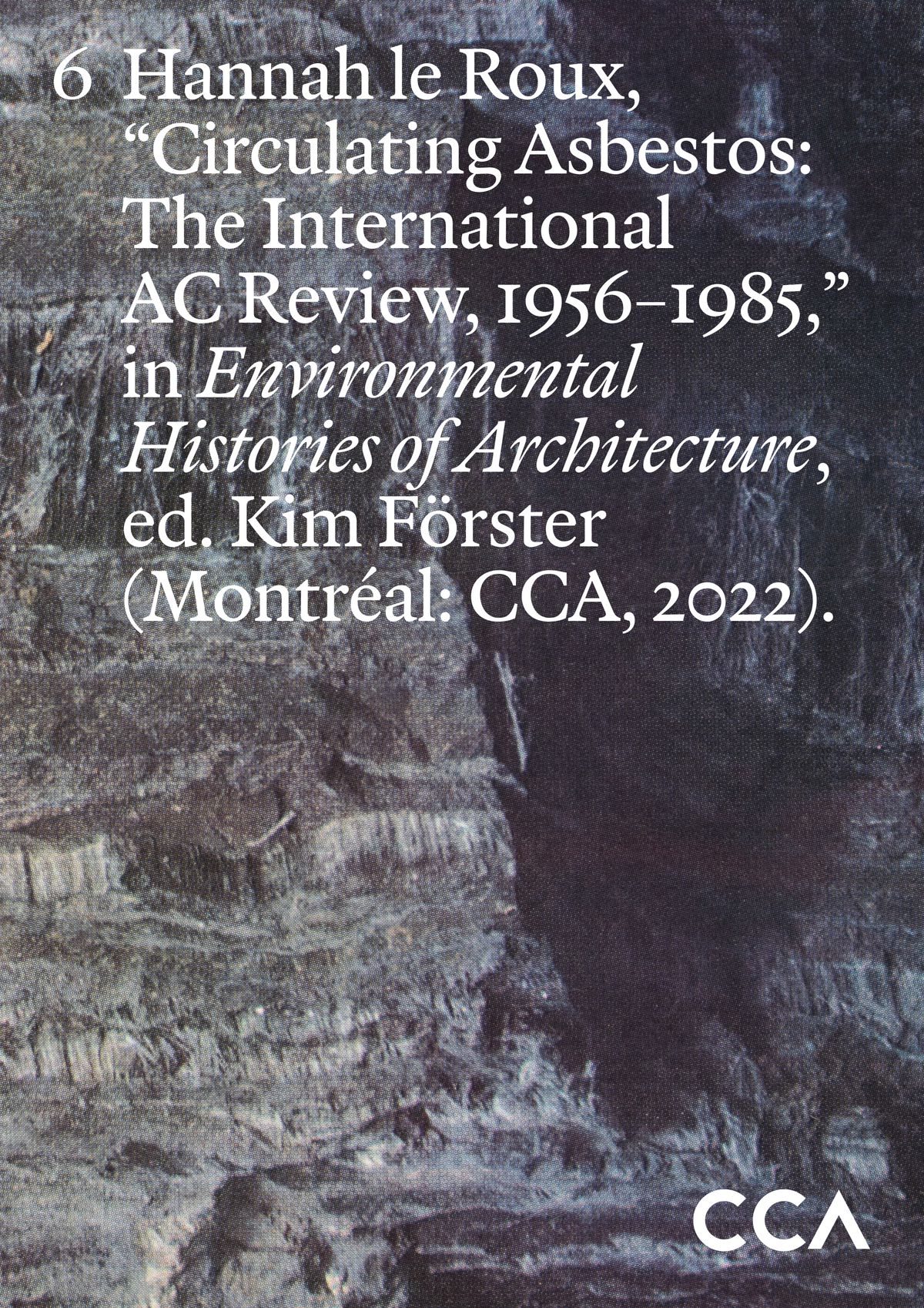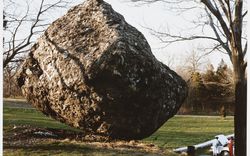With Environmental Histories of Architecture, the CCA launches an open-access publishing model to circulate the ideas generated through its research programs. These essays were produced as part of Architecture and/for the Environment, the third project (2017–2019) of the Multidisciplinary Research Program, organized by the CCA with generous support from the Andrew W. Mellon Foundation. The project—developed by Kim Förster (CCA Associate Director, Research, 2016–2018) with advisors Daniel Abramson, David Gissen, and Imre Szeman—examined unresolved, and perhaps irresolvable, contradictions and ambiguities in architecture’s environmental history.
Editor: Kim Förster
Managing Editor: Claire Lubell
Copyeditors: Ruth Jones, Lucas Freeman
Contributors (in publication order): Aleksandr Bierig, Nerea Calvillo, Daniel Barber, Kiel Moe, Jiat-Hwee Chang, Hannah le Roux, Isabelle Doucet, Paulo Tavares, Kim Förster
Graphic Design: Tessier A
Programming: Rosen Tomov
Published by the CCA and distributed open access by Library Stack.
This publication is made available according to the terms of the license CC BY-NC-ND.
